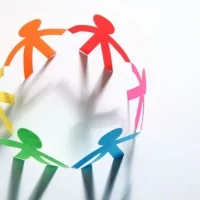Livelihood improvement is a critical focus for non-governmental organizations (NGOs) operating in developing countries. The concept encompasses a range of strategies aimed at enhancing the economic well-being of individuals and communities, particularly those living in poverty. In many developing regions, livelihoods are often precarious, reliant on subsistence agriculture, informal employment, or low-wage jobs.
As such, improving livelihoods is not merely about increasing income; it also involves enhancing access to resources, education, and opportunities that empower individuals to build sustainable futures. The importance of livelihood improvement cannot be overstated. It serves as a foundation for broader development goals, including poverty alleviation, gender equality, and social inclusion.
By focusing on sustainable livelihood strategies, NGOs can help communities become more resilient to economic shocks and environmental changes. This holistic approach recognizes that improving livelihoods is interconnected with health, education, and social cohesion, ultimately leading to more stable and prosperous societies.
Criteria for Selecting the 100 Best Donors
Financial Commitment and Consistency
The financial commitment of donors plays a vital role in this evaluation. This encompasses not only the amount of funding provided but also the consistency and reliability of that funding over time. Donors who demonstrate a long-term commitment to livelihood improvement initiatives are more likely to foster sustainable change within communities.
Measurable Impact and Effectiveness
Another crucial criterion is the impact of the donor’s contributions. This involves assessing how effectively the funds have been utilized in real-world projects and whether they have led to measurable improvements in livelihoods.
Alignment with Community Needs and Transparency
Additionally, the alignment of donor priorities with the needs of communities is essential. Donors who engage with local stakeholders and understand the unique challenges faced by communities are better positioned to support initiatives that yield positive outcomes. Finally, transparency and accountability in donor operations are vital for building trust and ensuring that resources are used efficiently.
Overview of the 100 Best Donors Supporting Livelihood Improvement
The landscape of donors supporting livelihood improvement is diverse, encompassing government agencies, private foundations, international organizations, and corporate social responsibility initiatives. Among these, several standout donors have made significant contributions to enhancing livelihoods in developing countries. For instance, the Bill & Melinda Gates Foundation has invested heavily in agricultural development and financial inclusion programs, recognizing that empowering smallholder farmers can lead to substantial economic growth.
Similarly, the Ford Foundation has focused on social justice and economic equity, funding initiatives that promote fair labor practices and support marginalized communities. Other notable donors include the United Nations Development Programme (UNDP), which implements various projects aimed at improving livelihoods through capacity building and sustainable development practices. By examining these donors and their contributions, NGOs can gain insights into effective funding strategies and potential partnerships that can amplify their impact.
Impact of Donor Support on Livelihood Improvement
The impact of donor support on livelihood improvement can be profound and multifaceted. Financial contributions enable NGOs to implement programs that provide training, resources, and infrastructure necessary for community development. For example, funding for vocational training programs can equip individuals with skills that enhance their employability, leading to increased income and improved quality of life.
Additionally, donor support can facilitate access to microfinance services, allowing entrepreneurs to start or expand businesses that create jobs within their communities. Moreover, donor support often extends beyond financial assistance; it can also include technical expertise and capacity-building initiatives. For instance, partnerships with donors can lead to knowledge transfer in areas such as sustainable agricultural practices or business management.
This holistic approach not only addresses immediate economic needs but also fosters long-term resilience by empowering communities to adapt to changing circumstances. Ultimately, the positive ripple effects of donor support can transform entire communities, leading to enhanced social cohesion and improved living standards.
Case Studies of Successful Livelihood Improvement Projects
Examining successful case studies provides valuable insights into effective strategies for livelihood improvement. One notable example is the “Self-Employed Women’s Association” (SEWA) in India, which has empowered millions of women workers in the informal sector through microfinance and cooperative models. With donor support, SEWA has facilitated access to credit, enabling women to start their own businesses and gain financial independence.
The success of this initiative highlights the importance of targeting marginalized groups and providing them with the tools they need to thrive. Another compelling case study is the “Productive Safety Net Programme” (PSNP) in Ethiopia, which aims to improve food security while promoting sustainable livelihoods. Funded by various international donors, PSNP provides cash or food transfers to vulnerable households while simultaneously investing in community infrastructure projects such as roads and irrigation systems.
This integrated approach not only addresses immediate food needs but also lays the groundwork for long-term economic development by enhancing agricultural productivity.
Challenges and Opportunities in Donor Support for Livelihood Improvement
While donor support plays a crucial role in livelihood improvement, several challenges persist that can hinder progress. One significant challenge is the fragmentation of funding sources, which can lead to inefficiencies and duplication of efforts among NGOs. In many cases, smaller organizations struggle to compete for funding against larger entities with more established networks.
This can result in valuable grassroots initiatives being overlooked despite their potential for impact. However, these challenges also present opportunities for innovation and collaboration among stakeholders. For instance, fostering partnerships between NGOs can create synergies that enhance program effectiveness and reach.
Additionally, leveraging technology can streamline communication between donors and recipients, ensuring that funds are allocated efficiently and transparently. By embracing these opportunities, NGOs can navigate challenges more effectively and maximize their impact on livelihood improvement.
Best Practices in Donor Support for Livelihood Improvement
To optimize donor support for livelihood improvement initiatives, several best practices should be considered. First, fostering strong relationships between donors and NGOs is essential for understanding community needs and aligning priorities. Regular communication and feedback mechanisms can help ensure that projects remain relevant and responsive to changing circumstances.
Furthermore, incorporating a participatory approach in project design is vital for ensuring community ownership and sustainability. Engaging local stakeholders in decision-making processes not only enhances project relevance but also builds trust and accountability among all parties involved. Additionally, monitoring and evaluation frameworks should be established from the outset to assess project outcomes effectively.
This data-driven approach allows for continuous learning and adaptation, ultimately leading to more successful interventions.
Future Trends in Donor Support for Livelihood Improvement
As we look toward the future, several trends are likely to shape donor support for livelihood improvement initiatives. One emerging trend is the increasing emphasis on climate resilience within development programs. As climate change continues to impact vulnerable communities disproportionately, donors are recognizing the need to integrate environmental sustainability into livelihood strategies.
This may involve funding projects that promote sustainable agriculture practices or renewable energy solutions. Another trend is the growing recognition of the importance of mental health and well-being in livelihood improvement efforts. Donors are beginning to understand that economic empowerment cannot be fully realized without addressing psychological barriers that individuals may face.
Programs that incorporate mental health support alongside economic initiatives are likely to gain traction as a holistic approach to development. In conclusion, livelihood improvement remains a vital area of focus for NGOs working in developing countries. By understanding the criteria for selecting effective donors, recognizing successful case studies, navigating challenges, implementing best practices, and anticipating future trends, NGO professionals can enhance their strategies for creating lasting change in communities around the world.
Through collaborative efforts with committed donors, we can pave the way for sustainable livelihoods that empower individuals and foster resilient societies.








































